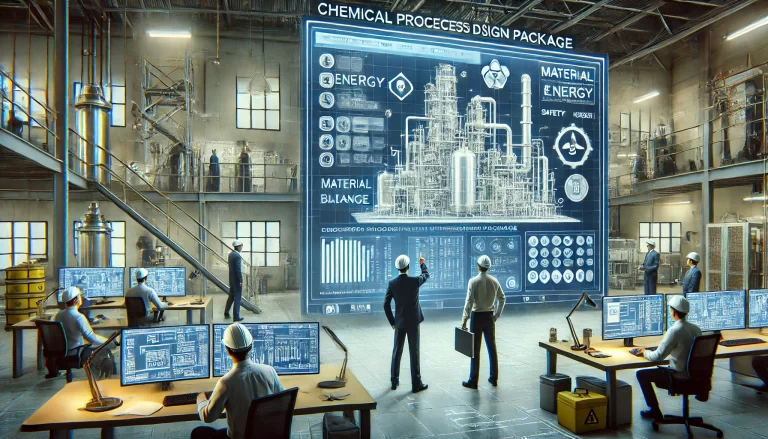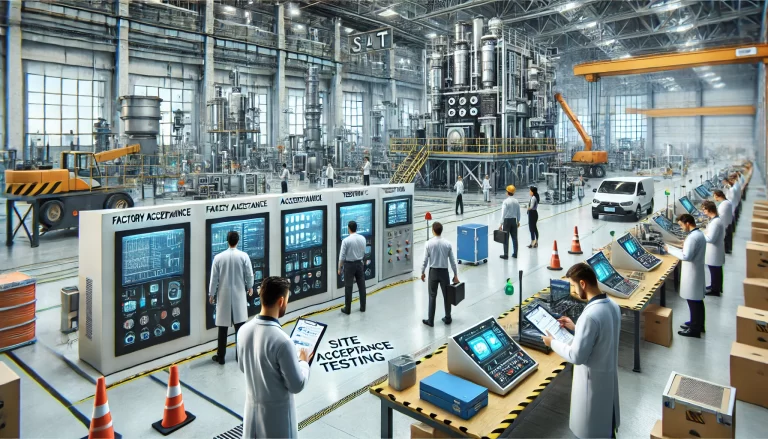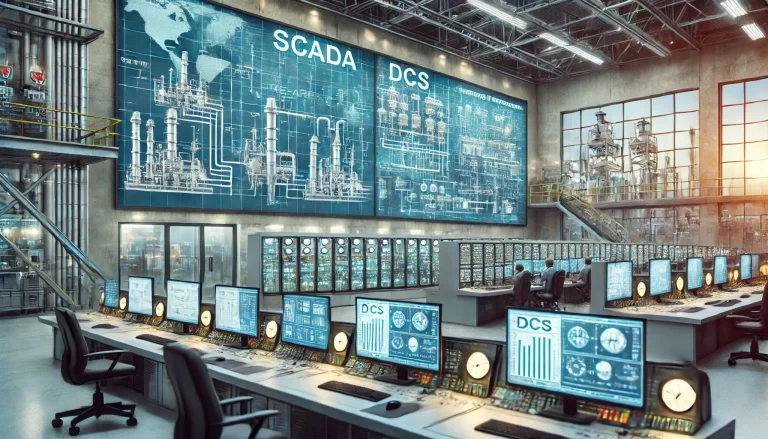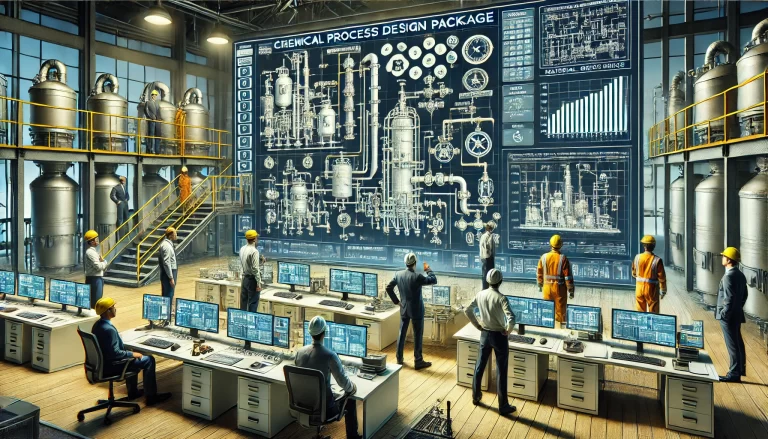Reviewing a chemical process design package is a crucial step in ensuring that the planned process meets engineering, safety, and operational standards. This detailed examination helps to prevent costly errors, maximize efficiency, and safeguard personnel and the environment. Here are the primary aspects that should be considered during the review of a chemical process design package:
1. Process Flow Diagrams (PFDs) and Process Descriptions
A thorough review begins with verifying the completeness and clarity of the process flow diagrams (PFDs). The PFDs should:
Clearly depict all major equipment, pipelines, and flows.
Include detailed labels for streams, showing relevant process conditions (temperature, pressure, composition).
Align with a comprehensive process description that outlines each step in the process, confirming that the narrative matches the visual representation.

2. Material and Energy Balances
Material and energy balance calculations are fundamental to assessing the feasibility of the process:
Ensure that mass balance calculations account for all inputs, outputs, and internal recycle streams, with no discrepancies.
Confirm energy balance calculations for all major process units, checking for reasonable values of heat and work inputs or outputs.
Identify whether these calculations incorporate validated data or reliable estimation methods.
3. Process Conditions and Parameters
Review the design and operational conditions of each process step:
Confirm the suitability of specified temperatures, pressures, and flow rates.
Assess whether critical parameters have been optimized based on process simulations or experimental data.
Verify that the chosen conditions minimize risks of side reactions or process inefficiencies.
4. Equipment and Instrumentation List
The equipment and instrumentation list should be detailed and accurate:
Check if equipment specifications (e.g., materials of construction, capacities, design temperatures/pressures) are appropriate for the intended service.
Verify that all critical instruments and control devices are listed and appropriately specified.
Ensure redundancy in essential control systems to support operational safety.

5. Safety Analysis
Safety considerations are vital in any chemical process review:
Conduct a thorough Process Hazard Analysis (PHA), such as HAZOP or FMEA, to identify potential risks.
Confirm the design includes appropriate safety measures like pressure relief devices, emergency shutdown systems, and containment strategies.
Evaluate the adequacy of safety instrumented systems (SIS) and their compliance with industry standards.
6. Process Control Systems
Examine the process control strategy to ensure it supports efficient and safe operation:
Review the control logic diagrams (CLDs) and determine if they align with operational needs.
Ensure that the design includes appropriate automation levels, with a clear hierarchy of manual overrides and automatic controls.
Assess the design for alarm management, ensuring critical alarms are prioritized and linked to appropriate response actions.
7. Process Simulation and Calculations
Review any simulations conducted to validate process performance:
Confirm that appropriate software (e.g., Aspen Plus, HYSYS) and models have been used.
Check for detailed documentation of simulation assumptions, boundary conditions, and results.
Evaluate whether simulation outcomes have been cross-referenced with empirical data or literature values for accuracy.

8. Environmental Compliance and Waste Management
Ensuring that the process meets environmental regulations is essential:
Verify that emissions, effluent discharge, and waste byproducts are identified and managed according to local and international standards.
Review plans for waste treatment and recycling to confirm environmental sustainability.
Check for permits and approvals that may be required from regulatory bodies.
9. Economic Feasibility
Economic assessments should reflect a realistic projection of the process’s viability:
Review the cost analysis for raw materials, utilities, and other operational expenses.
Ensure capital expenditure (CAPEX) and operational expenditure (OPEX) estimates are well-documented and justifiable.
Confirm that projected revenues align with market conditions and production forecasts, indicating a feasible return on investment.

10. Constructability and Operability
Ensure the design supports practical construction and operation:
Assess whether equipment layout and piping design facilitate safe construction and ease of maintenance.
Confirm that the process configuration supports efficient plant start-up and shutdown sequences.
Identify any potential operational challenges and include recommendations for addressing them.
11. Compliance with Industry Standards and Regulations
Ensure the design adheres to all relevant standards:
Verify that the design aligns with local, national, and international safety codes (e.g., API, ASME, ISO).
Confirm that best practices for chemical processing, environmental controls, and safety protocols are integrated.
Review documentation to ensure the process will comply with regulations for health, safety, and environmental protection.

Conclusion
A comprehensive review of a chemical process design package involves a multifaceted approach that addresses process accuracy, safety, environmental compliance, and economic feasibility. Ensuring these aspects are thoroughly evaluated helps mitigate risks, optimize performance, and enhance the overall success of the project.
